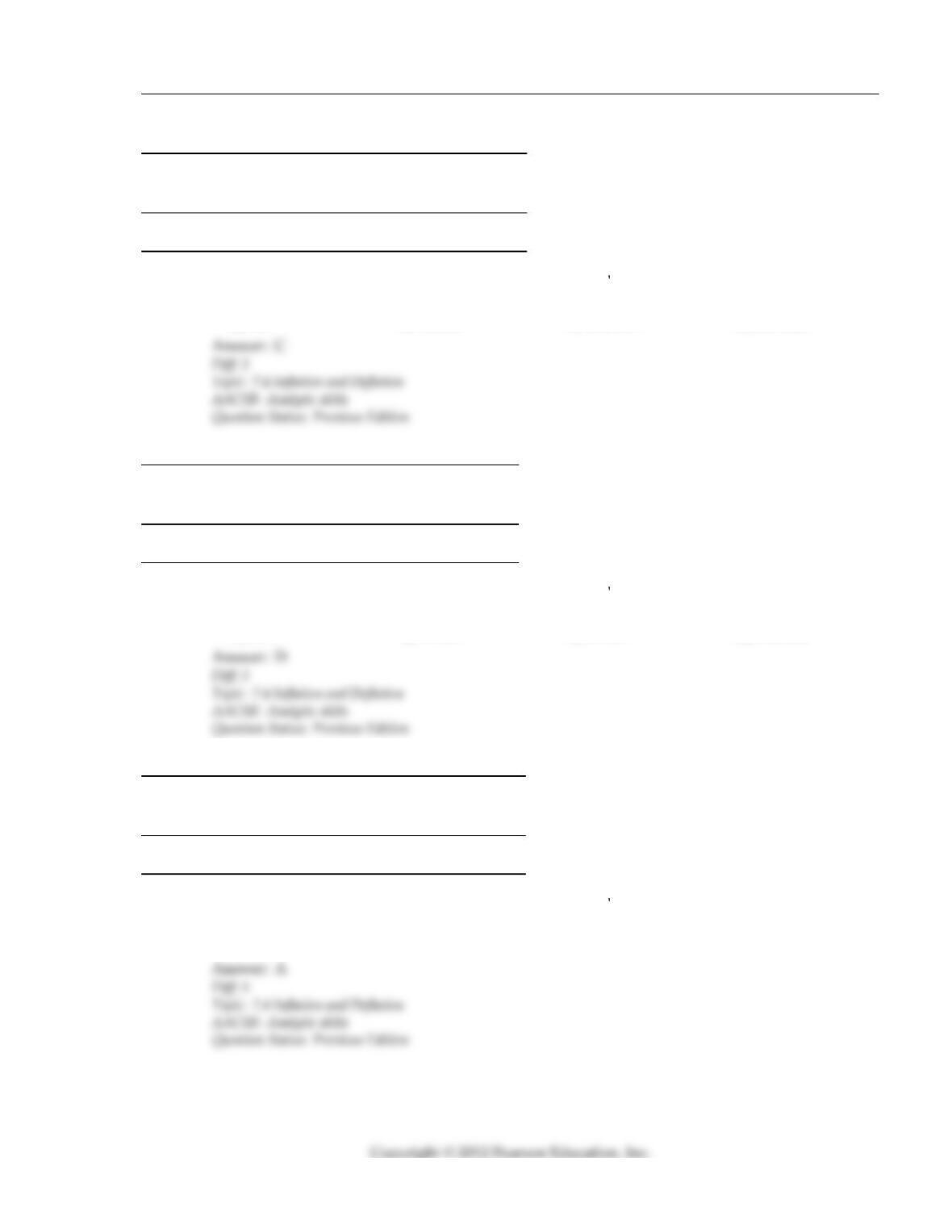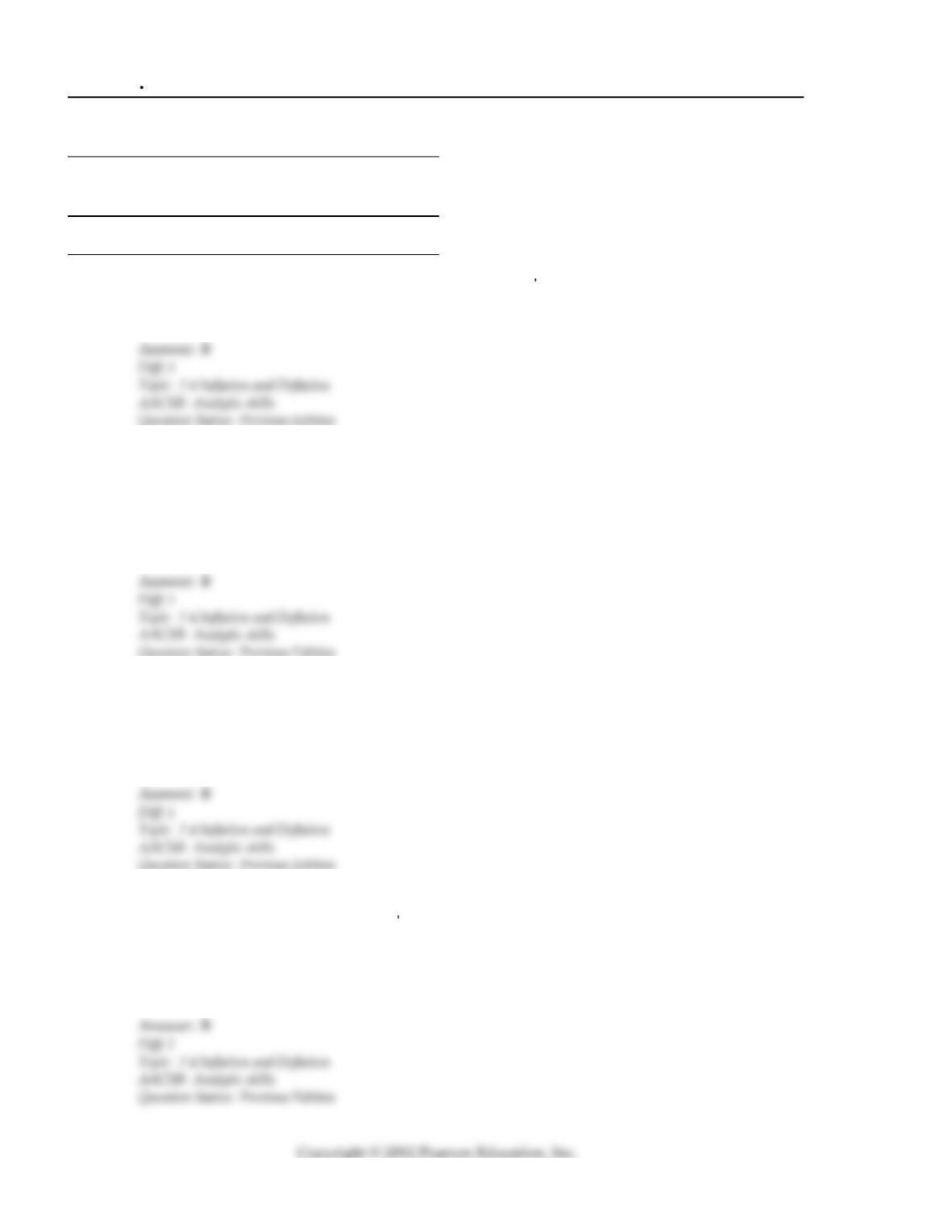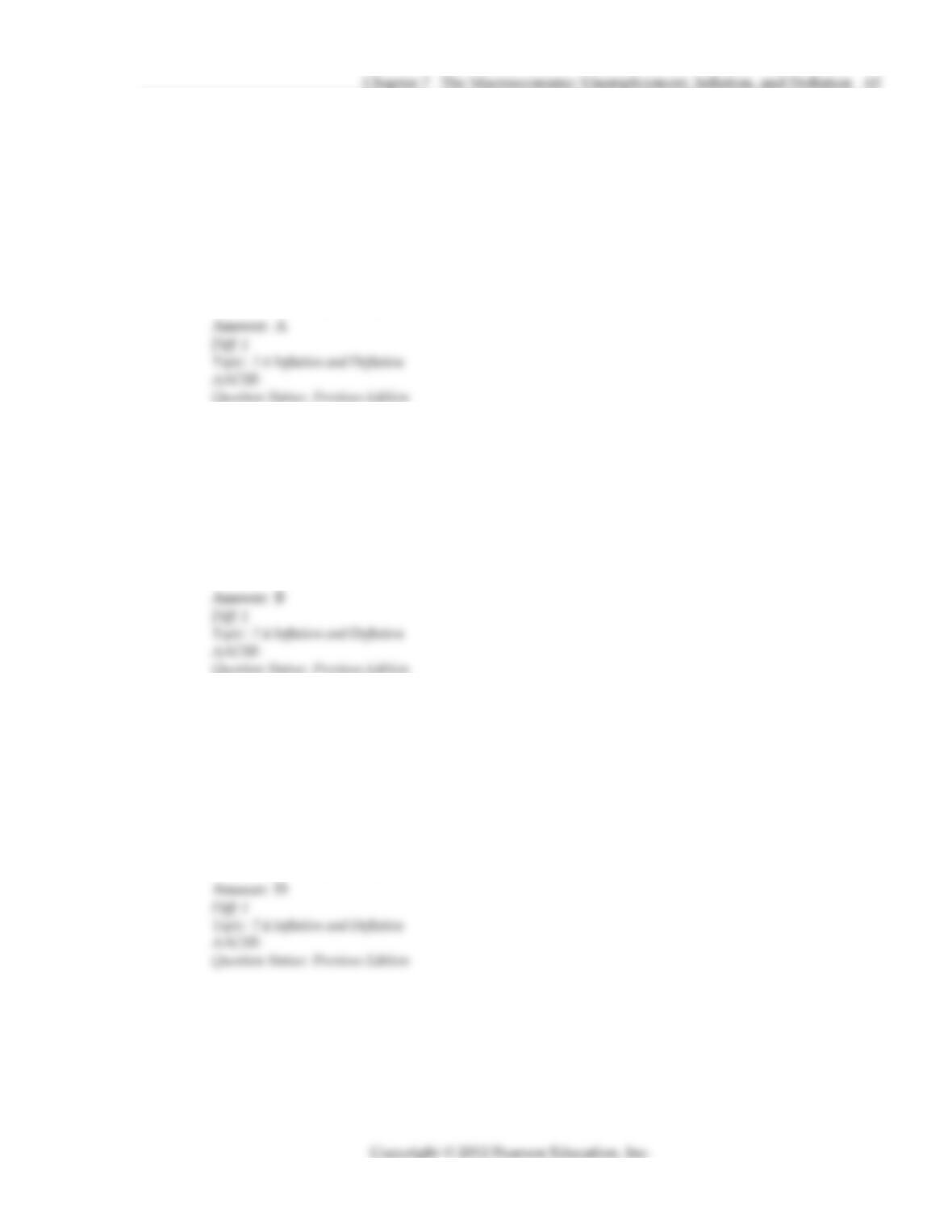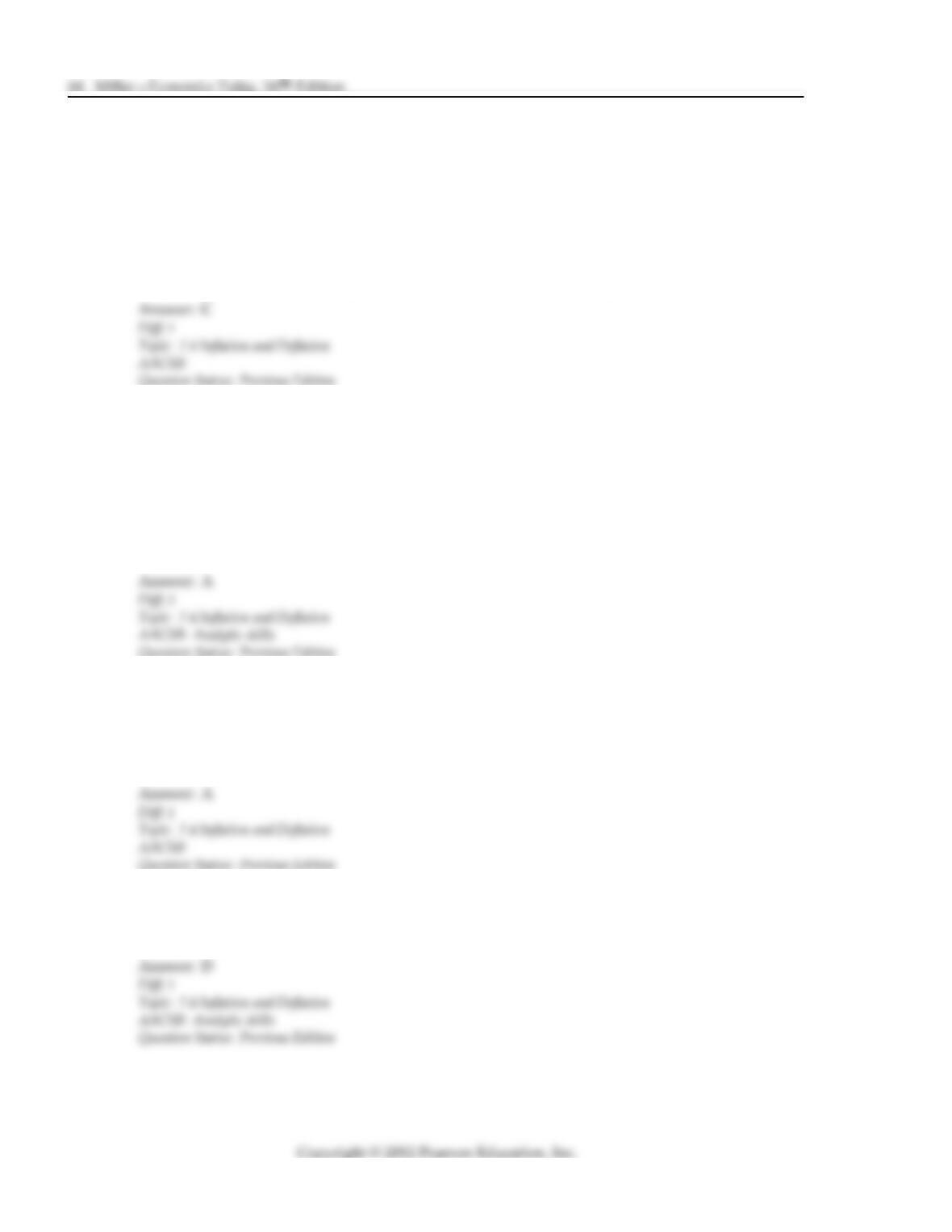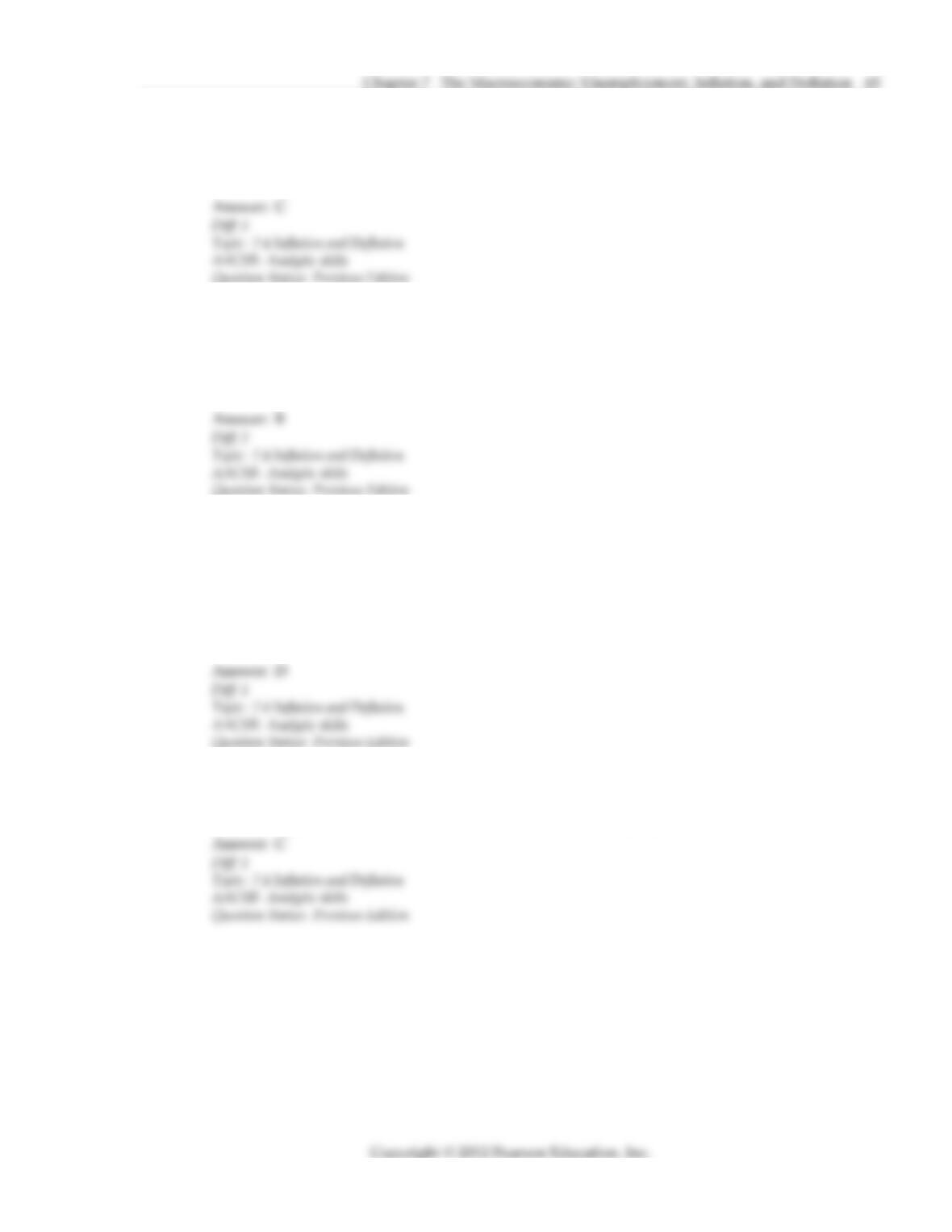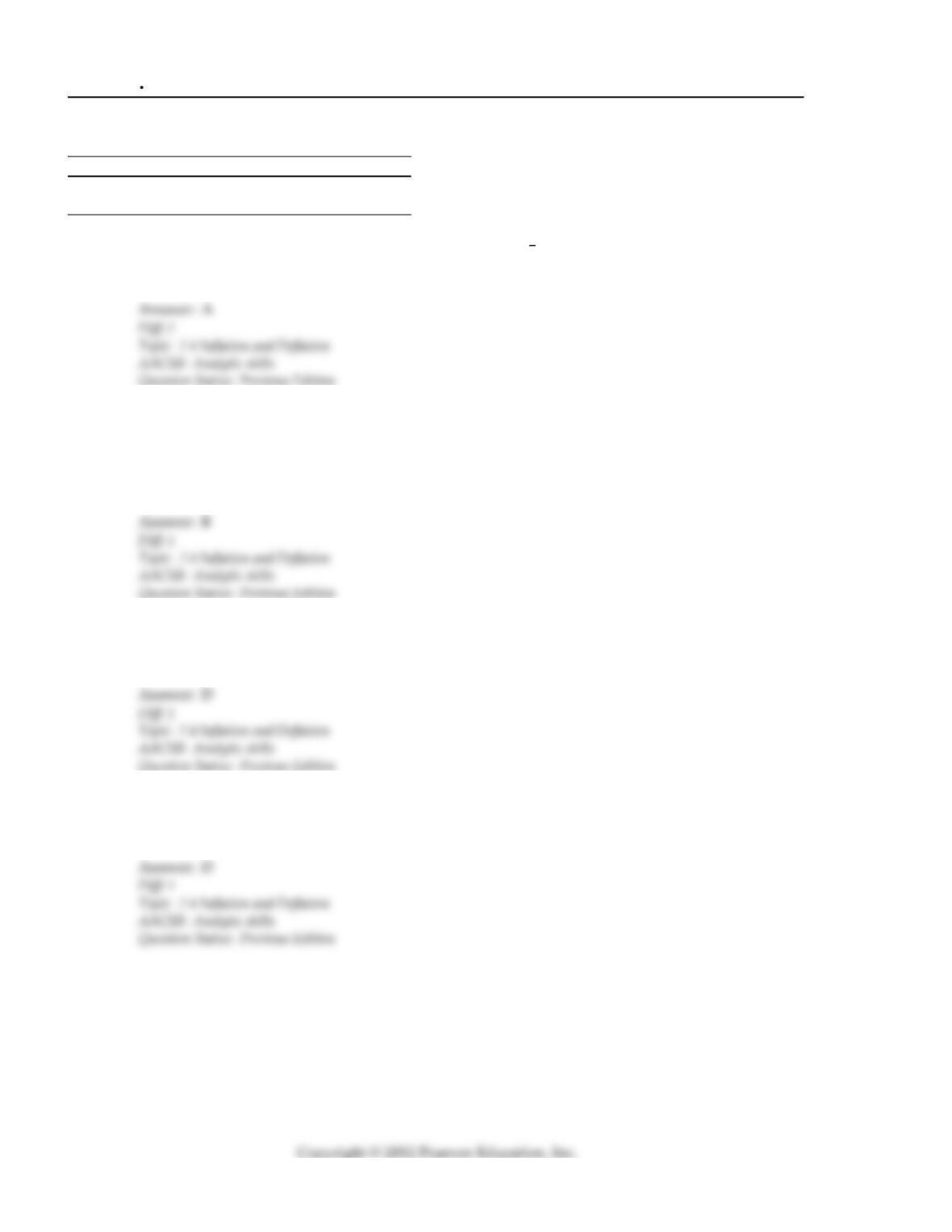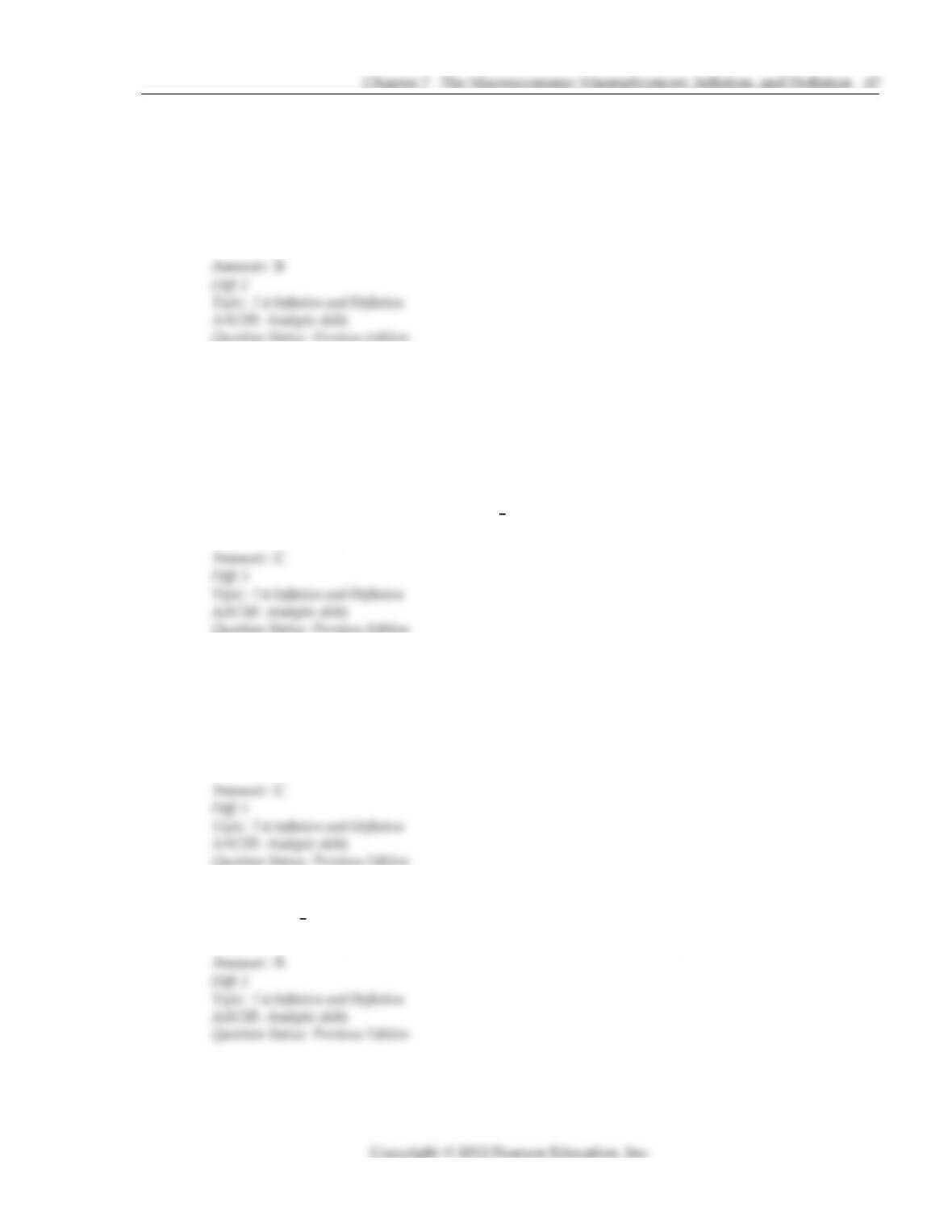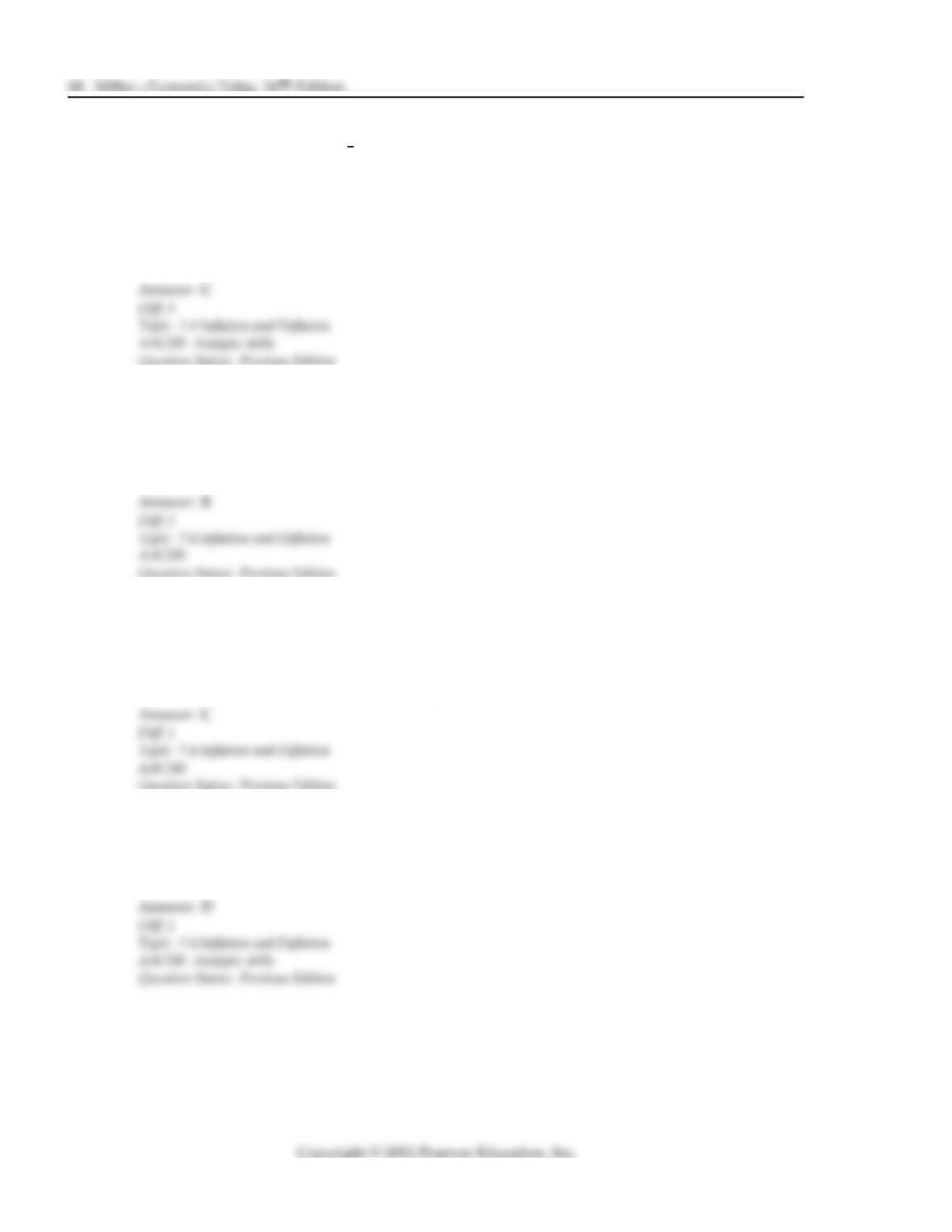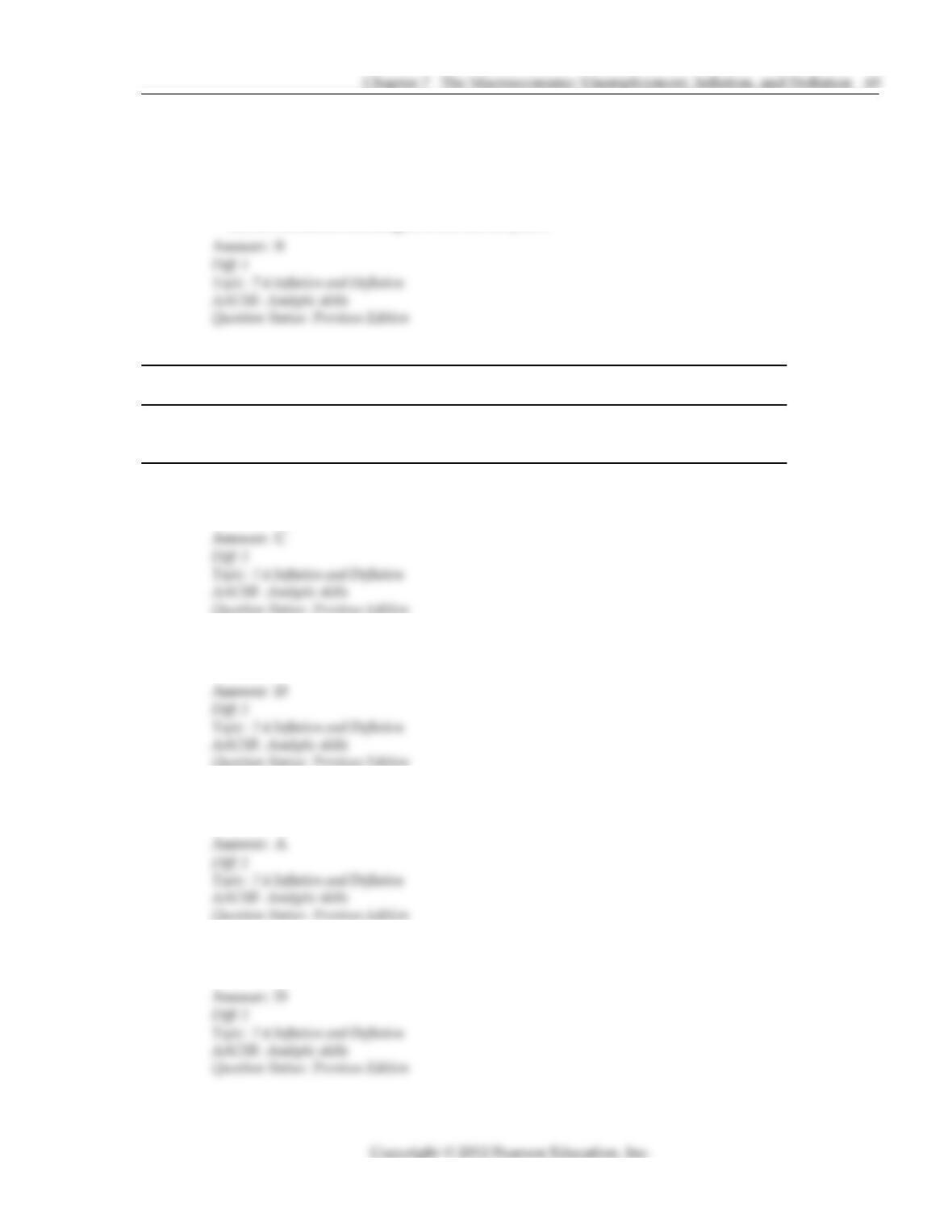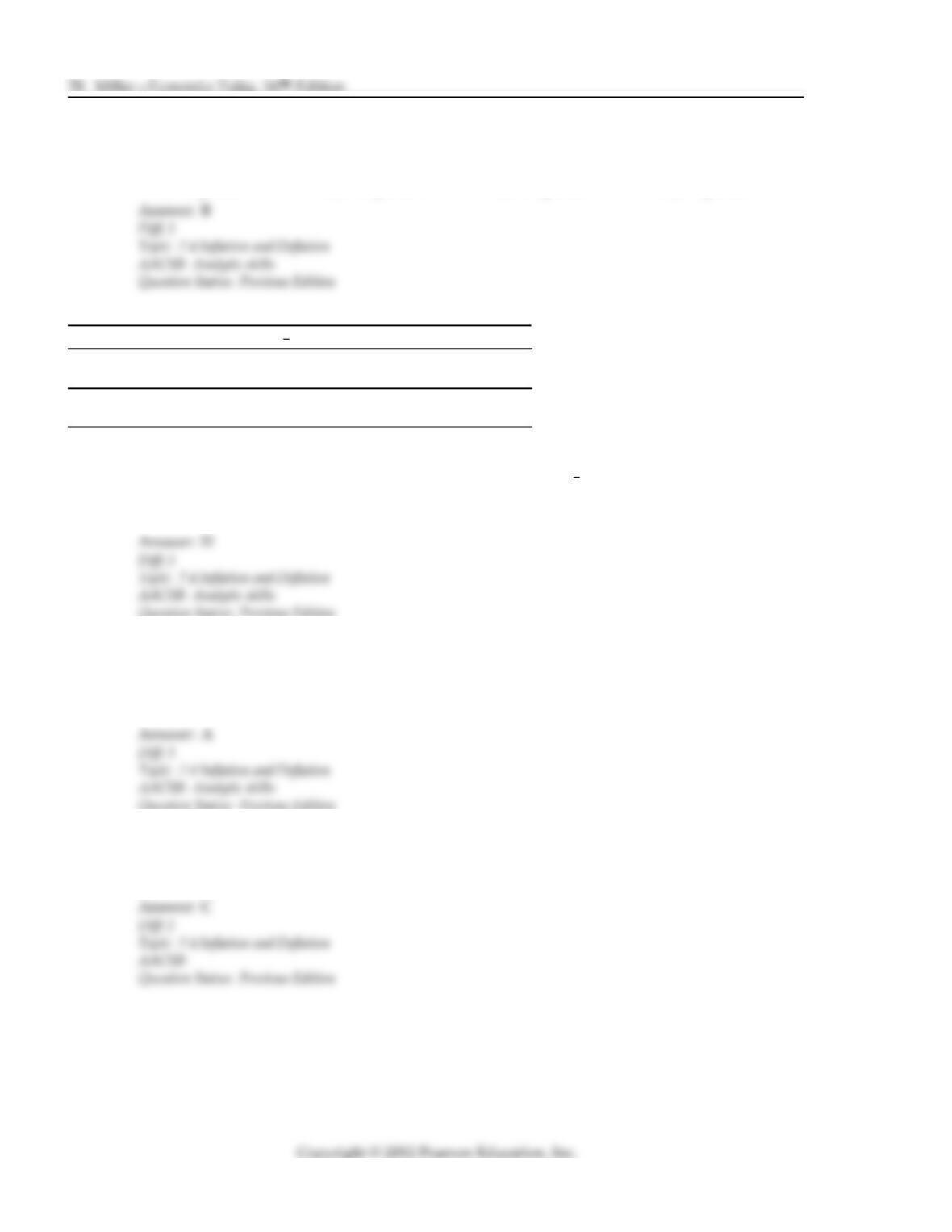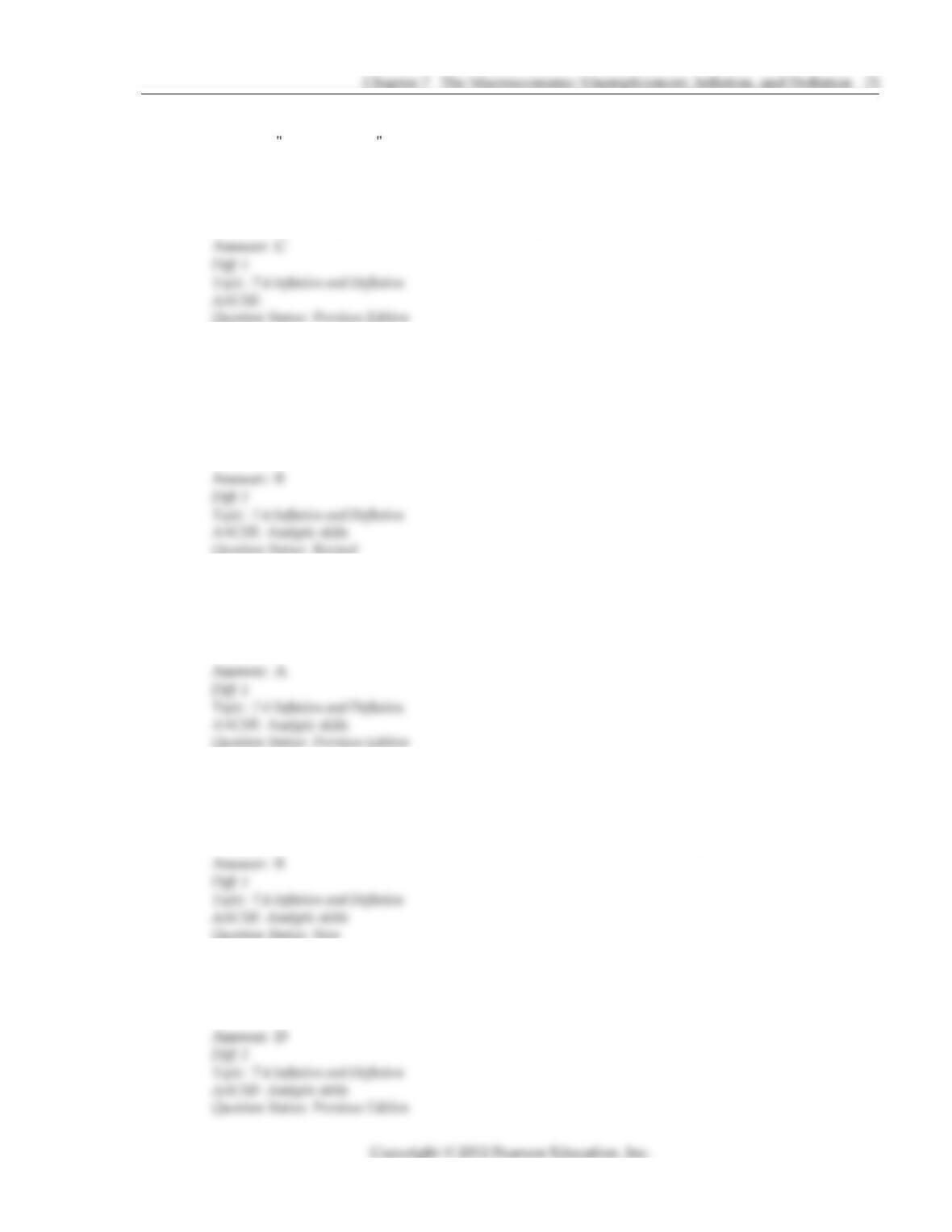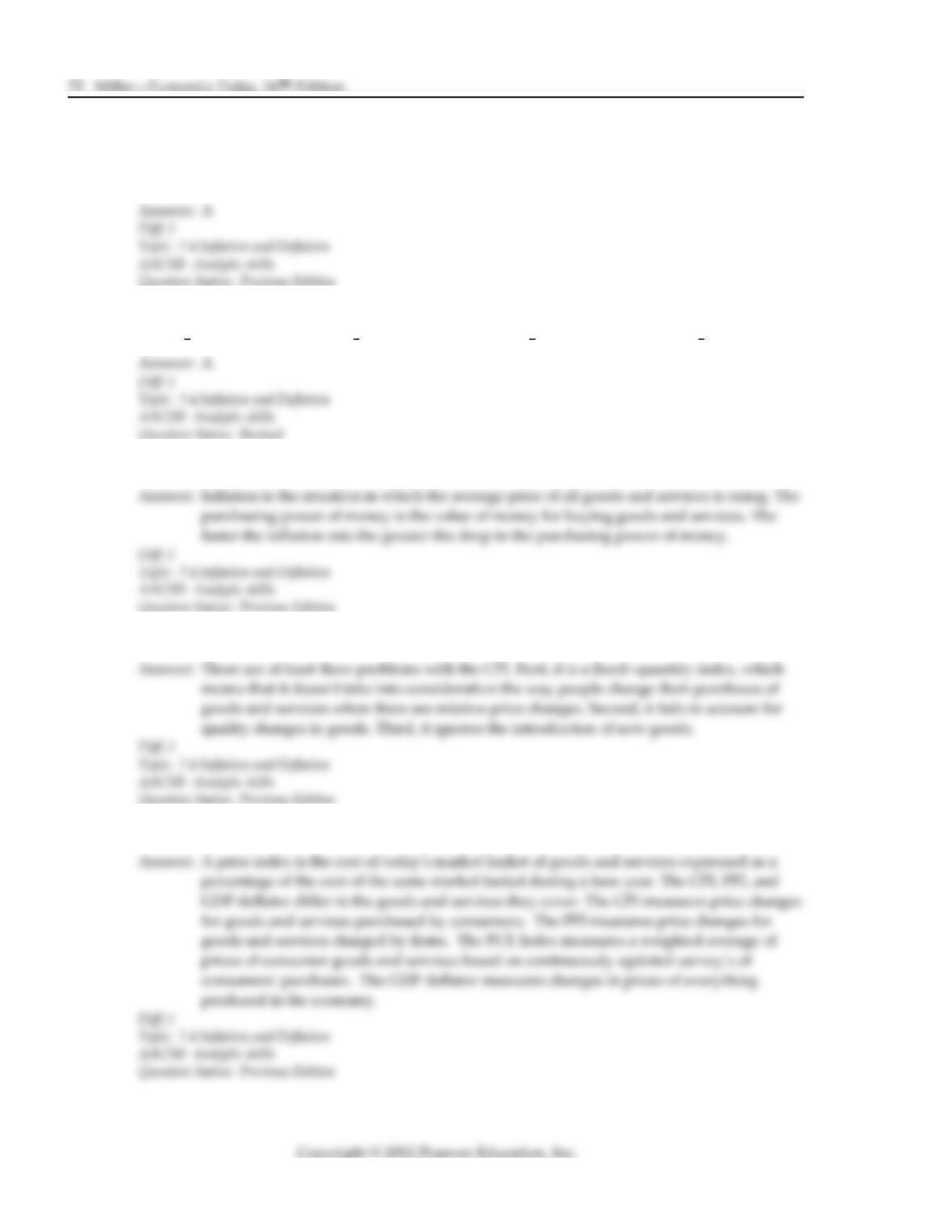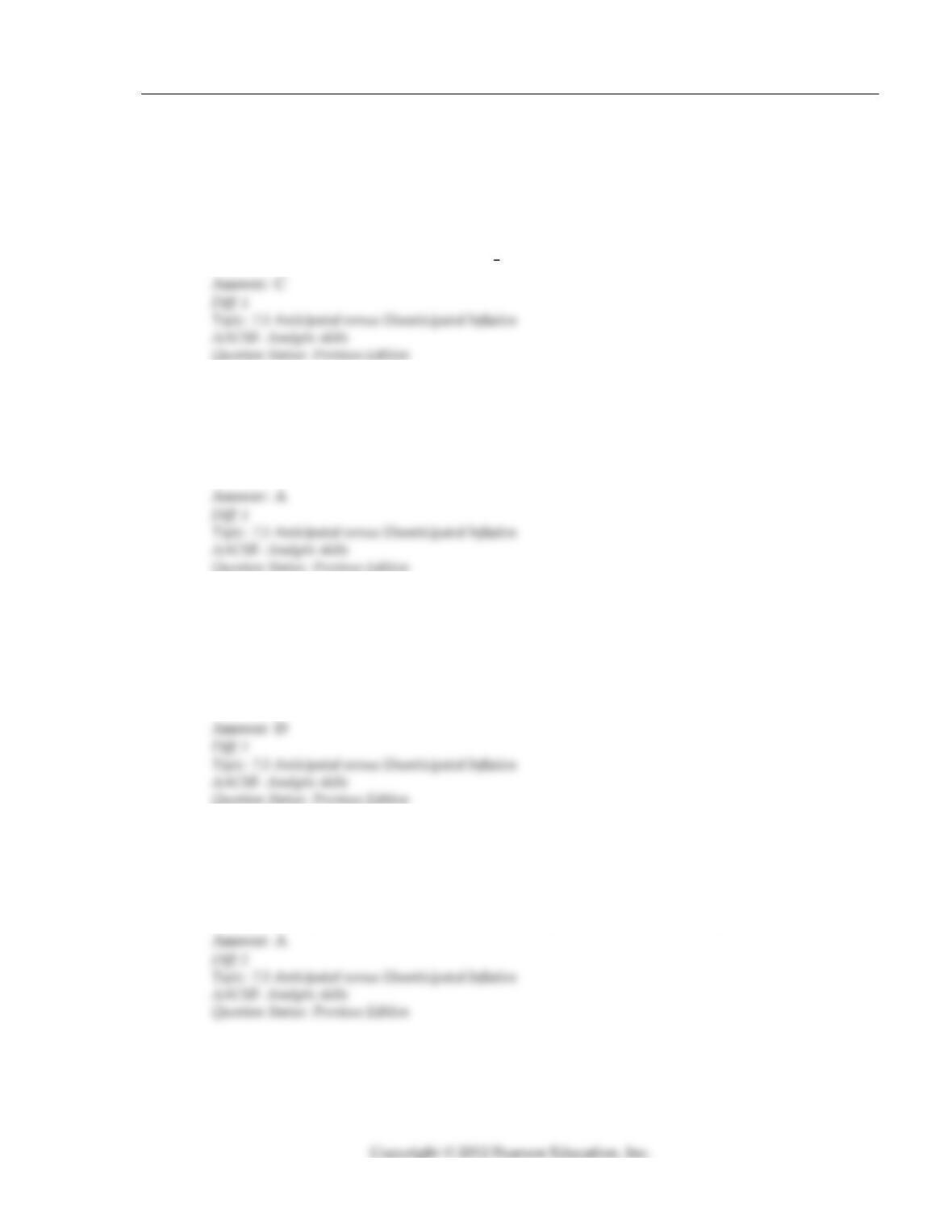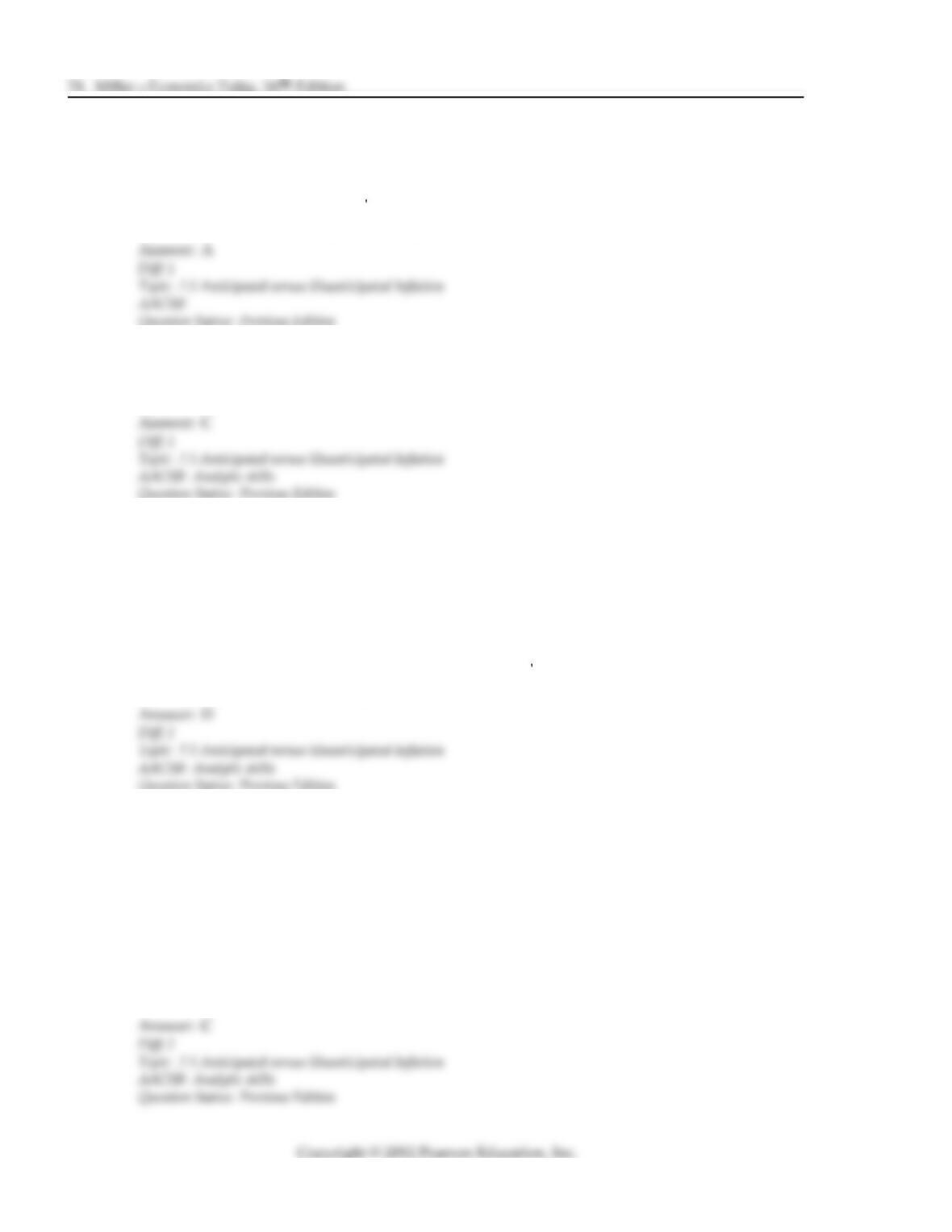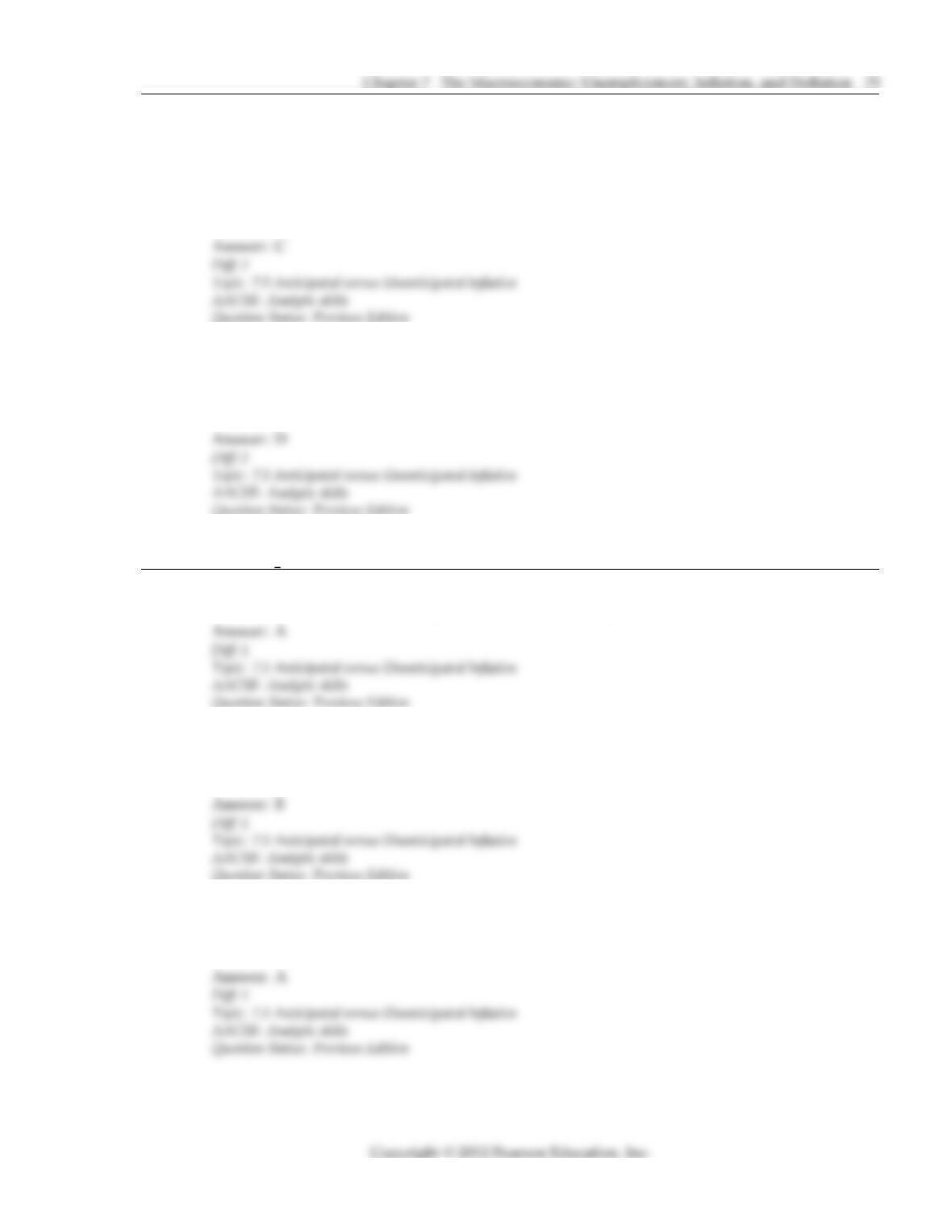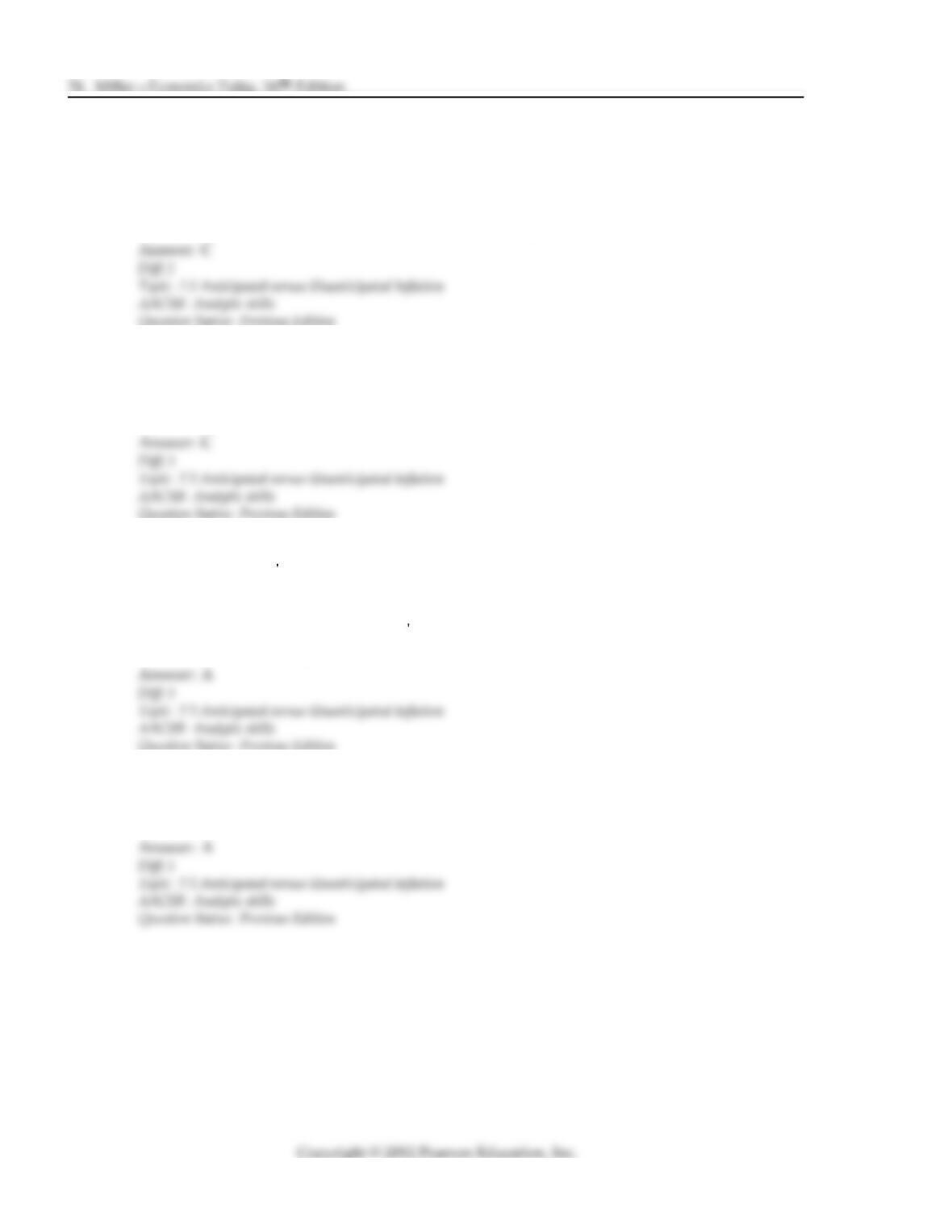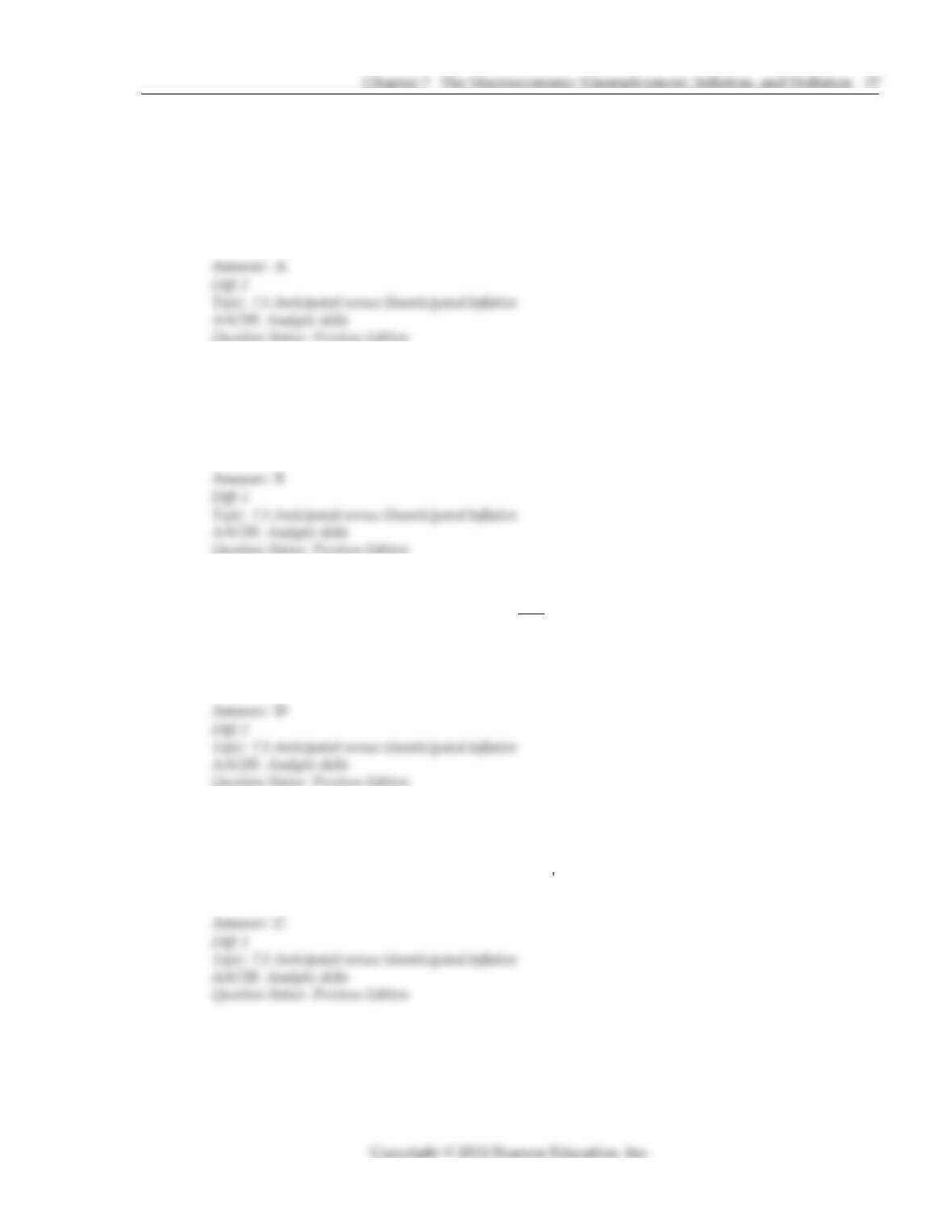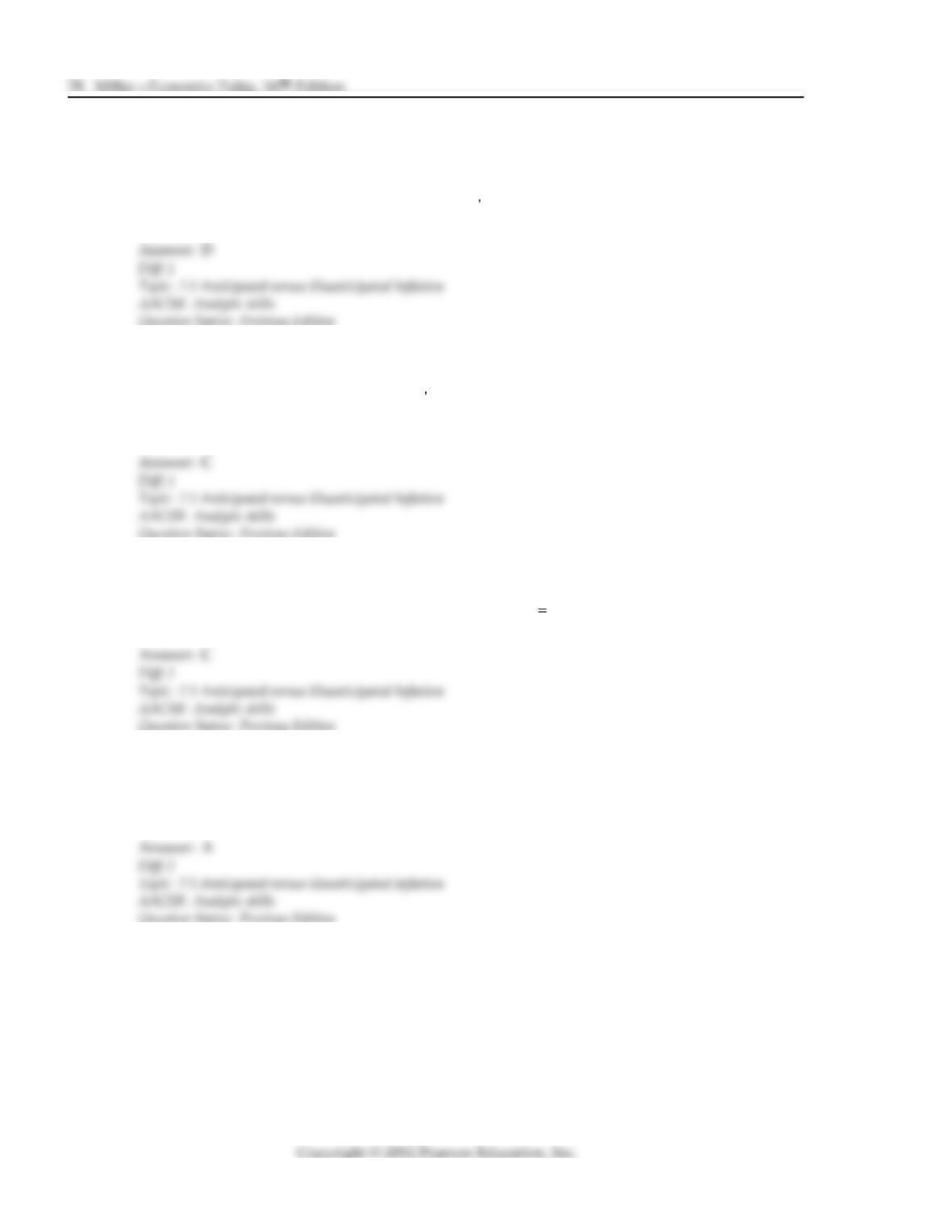5) The real rate of interest is the
A) nominal rate of interest minus the anticipated rate of inflation.
B) current rate actually paid by the borrower.
C) difference between the bank s lending and savings rates.
D) current rate which the government pays on its debt.
6) If the rate of inflation is 4 percent and the real interest rate is 3 percent, the nominal interest rate
should be
A) 1 percent. B) 4 percent. C) 7 percent. D) 11 percent.
7) Under which one of the following situations would you be better off?
A) You have $10,000 in your savings account paying 5 percent per year and unanticipated
inflation is 8 percent per year.
B) You have paid $500 for a $1,000 U.S. savings bond that matures in 10 years and
unanticipated inflation is 10 percent per year.
C) You lend a friend $1,000 at 6 percent to be repaid in one year and unanticipated inflation is
7 percent during the year.
D) You borrowed $2,500 at 7 percent to pay for this year s college expenses and unanticipated
inflation is 12 percent during the year.
8) Suppose that you borrow $5,000 from the bank to purchase some land and you agree to pay 9
percent interest on the loan. If the loan must be repaid in 12 months and the inflation rate is 13
percent during the year, then
A) you will repay the bank with dollars with more purchasing power than you initially
borrowed.
B) you will repay the bank with fewer dollars than the bank initially loaned you.
C) you will repay the bank with dollars with less purchasing power than it initially loaned
you.
D) the bank will receive fewer dollars, because of inflation, than it had initially expected to
receive.
